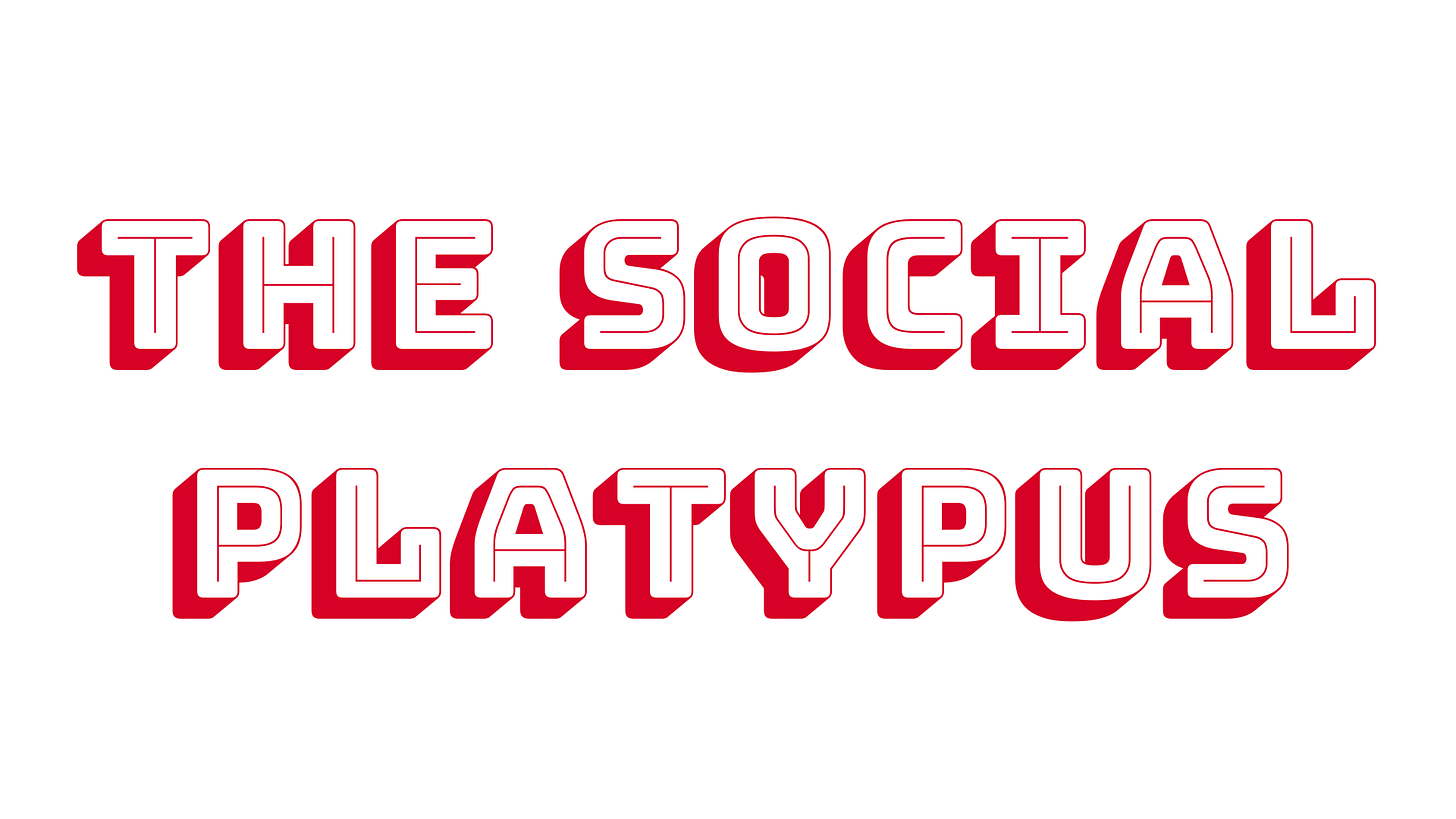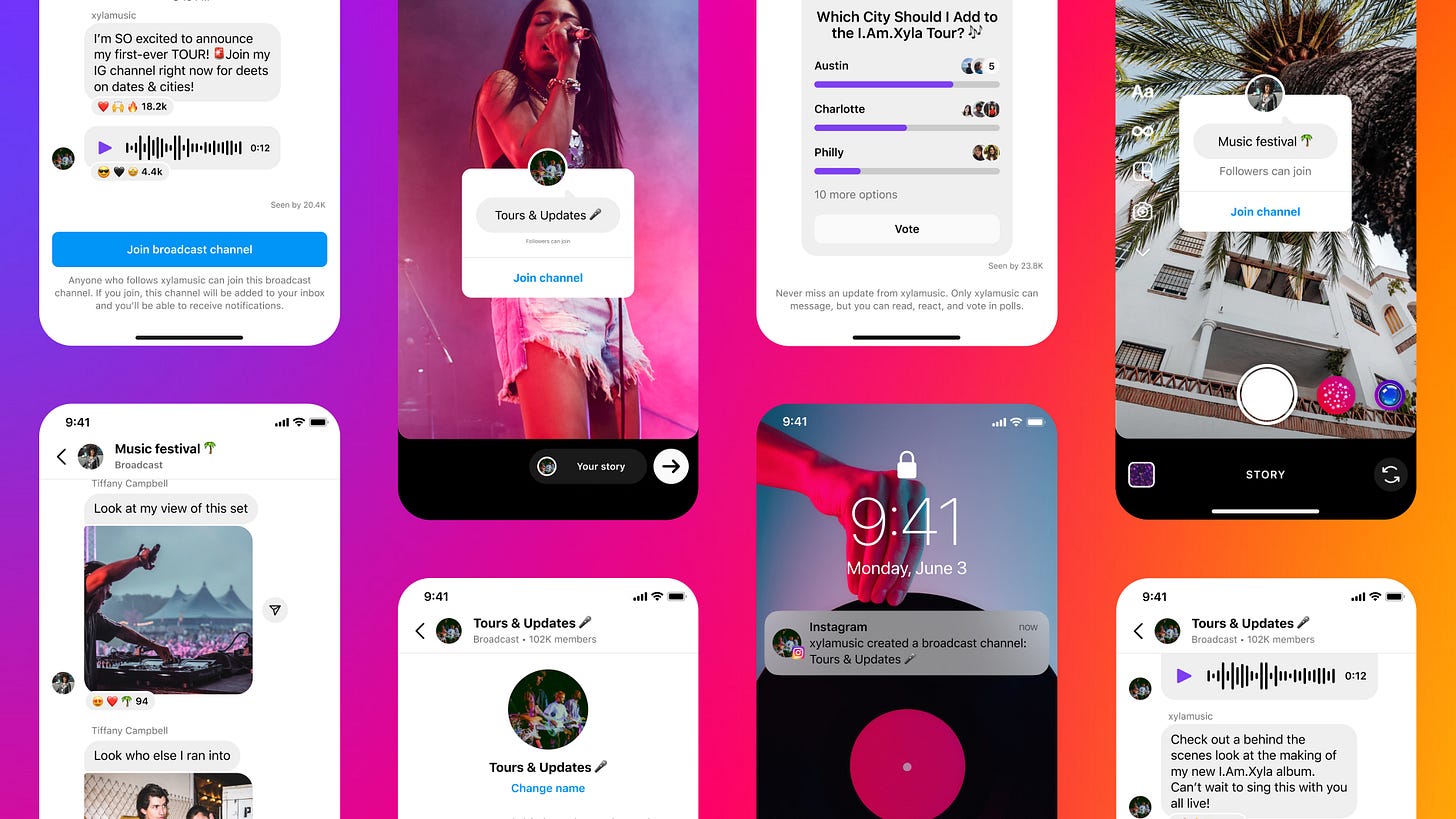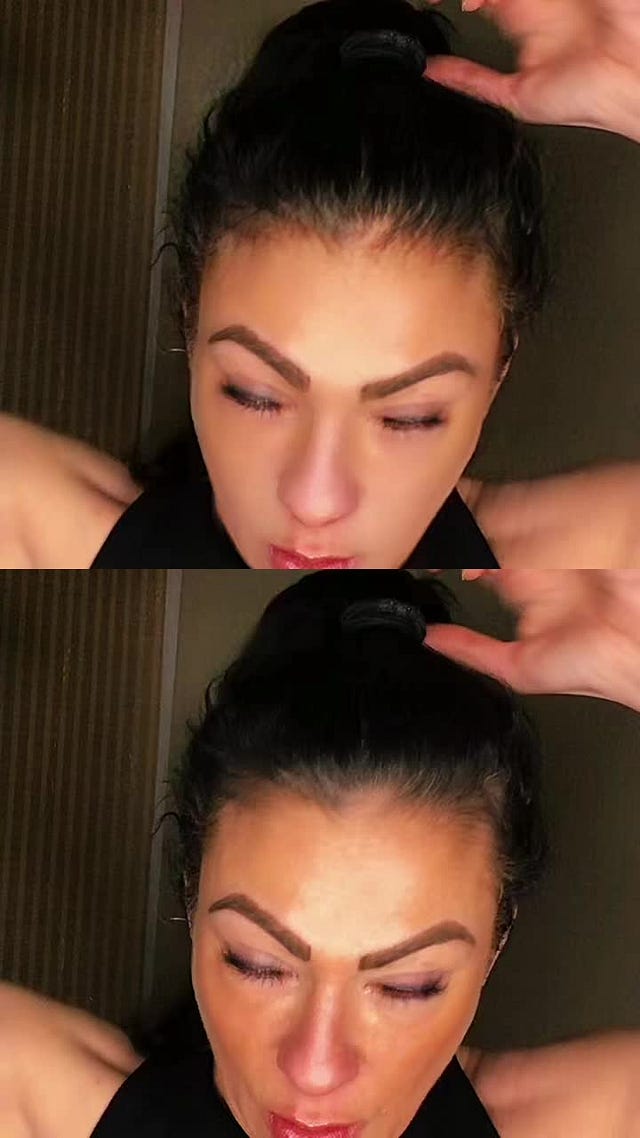Google is temporarily blocking a small percentage of Canadians (4%) from seeing news articles in protest of Bill C-18, which would require companies like Google and Facebook to pay Canadian media companies to feature news on their sites (CTV News has a great explainer). Facebook tried this tactic back in 2021 when negotiating something similar with Australia. But both companies ended up paying in the end. In the meantime, I’m not sure Google should be discouraging anyone from using its search capabilities, given that it already knows Gen Z is searching elsewhere.
In today’s newsletter:
Social media companies find a new revenue stream — users
Instagram launches Broadcast Channels
And here’s a quick way to find Gen Xers on TikTok
💰 CASHING IN 💰
Remember the good old days when we only paid for social media with our personal information? Back then, we could happily post for the small fee of having our information farmed and misused (Cambridge Analytica, ahem), while also being served endless ads.
It looks like now we’ll also have to break out our wallets. Meta (aka, Facebook and Instagram) is the latest social media company to test a subscription model. But overall, social media companies are monetizing all kinds of features, and we can all thank Elon Musk. Here’s what you need to know…
1/3 Meta’s Verified Subscription Bundle
A week ago, Meta announced it’s starting to test a subscription model with creators in Australia and New Zealand “to help creators establish their presence.” Just to translate — for $11.99 USD on the web or $14.99 USD on Android and iOS, creators can pay for a subscription bundle that includes:
A verified badge (unlike Twitter, creators will still have to confirm who they are with government-issued ID)
More protection from impersonation (the blog post just mentions “proactive monitoring”)
Access to live chat for “common account issues” (Hallelujah to this, honestly)
Increased reach and visibility (search, comments, recommendations)
Exclusive features (not many details here)
For now, if you’re already verified, there won’t be any changes to your account. But in the future, we could all be affected, according to the Meta Blog:
“As we test and learn, there will be no changes to accounts on Instagram and Facebook that are already verified based on prior requirements. Long term, we want to build a subscription offering that’s valuable to everyone, including creators, businesses and our community at large.”
2/3 Thank Elon
Twitter launched a Twitter Blue subscription model in 2021 that gave users a few added features (such as being able to put a timer on tweets for editing). But it wasn’t until Elon Musk took over Twitter and revamped the program earlier this year that the subscription bundle also included verification.
As I mentioned at the time in a blog post, other social media companies would be watching to see if it was successful, and if so, would be interested in copying that revenue stream. So it’s really not that surprising that Meta is following along (it famously loves to steal, buy or bury).
To be fair, other companies, like Snap, also offer subscription models, such as Snapchat+. But paying for verification is definitely new.
3/3 The problem with paying
Many businesses and organizations rely on verification to confirm that they are who they say they are, and to avoid confusion with satirical or fake accounts. And with Meta, at least you still have to confirm you are who you say you are. In some ways, paying for this without having to have a huge following is a positive in my opinion.
But my bigger concern is how other basic — and in some cases security-focused — features are being bundled in with verification.
For example, Twitter users now have to pay for the privilege of using multi-factor authentication (MFA) on their accounts. MFA, which is the minimum recommended cybersecurity measure, is essentially that text you get when you sign into a platform with your username and password as a double way to confirm access. A recent Twitter blog suggests this method of MFA isn’t great anyway, but paying users will still have access to it.
Overall, I think we’re entering a new phase of social media management where we’ll have to keep our credit cards handy if we want to fully participate in social media. Tech companies that are laying off staff and cancelling projects are looking for new sources of revenue beyond ads — and it looks like it’s us.
SOCIAL SNACK
Instagram Launches Broadcast Channels
This feature might actually be helpful. Instagram is testing public “Broadcast Channels” with a handful of US content creators. It’s essentially a chat feature where creators can use text, photo, video and voice notes to post to a channel of followers. Followers can react to content and vote in polls, but only creators can send messages. While this test is currently being run in Instagram, expect to see it on Messenger and Facebook in the coming months.
ICYMI
YouTube launches multi-language audio [YouTube Blog]
Snapchat now offers Sound Recommendations on Lenses and Sound Sync for Camera Roll [Snapchat Blog]
TikTok introduces a Creativity Program Beta [TikTok Blog]
LinkedIn adds option to tag chats with a “starred” function [Social Media Today]
Pinterest launches a Pinterest Academy for advertisers [Pinterest Blog]
GEN X IS IN TEARS
If you want a quick way to find Gen Xers on TikTok, just do a search for “Teenage Filter.” This AI-generated filter offers a youthful version of yourself that has some in tears — not because Gen Xers want to look like a teen again, but because they are remembering who they were as a younger person, complete with dreams and ambitions.
AI-generated face filters on TikTok are getting a lot of buzz in general, particularly one called “Glamour Bold.” It’s actually terrifying how real it looks. 😳








